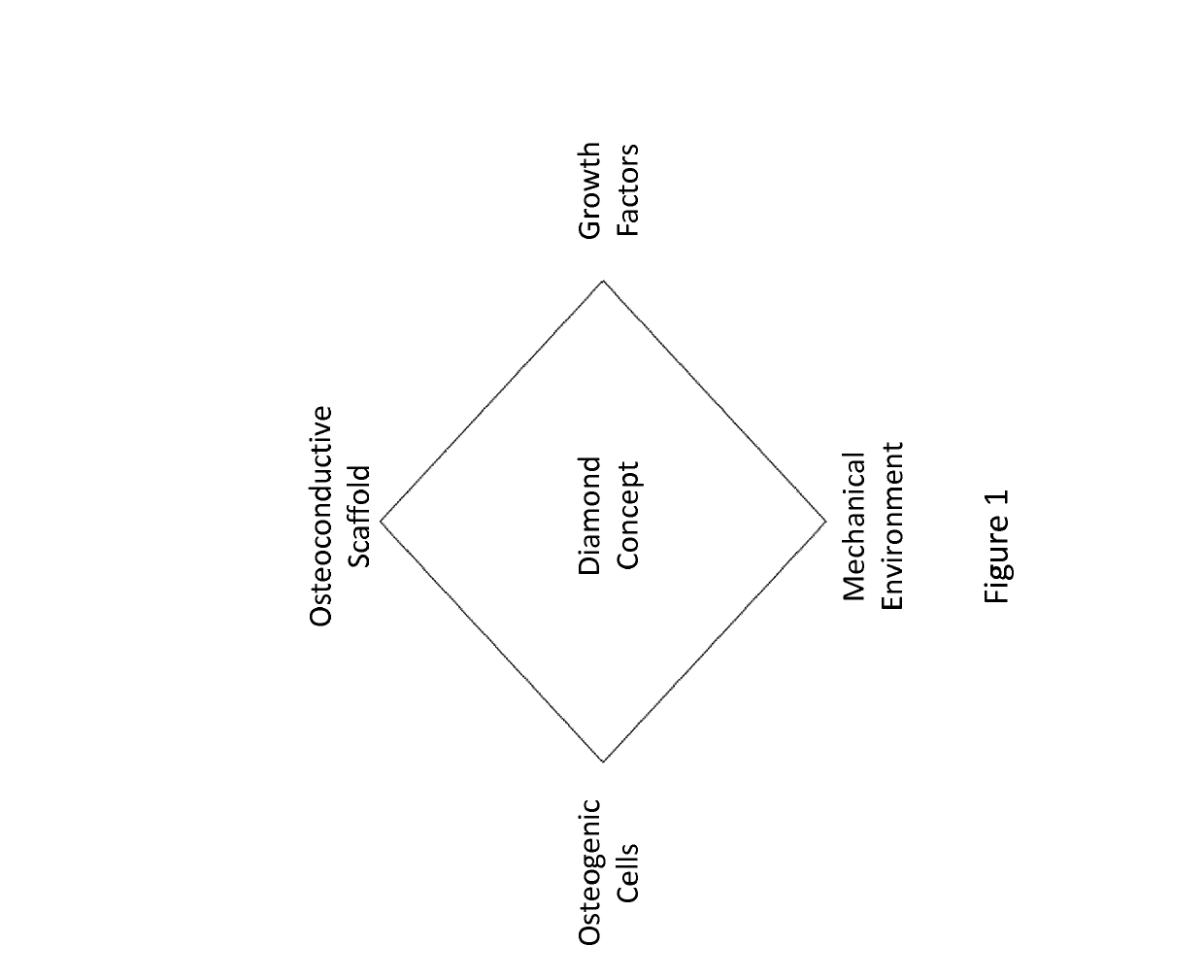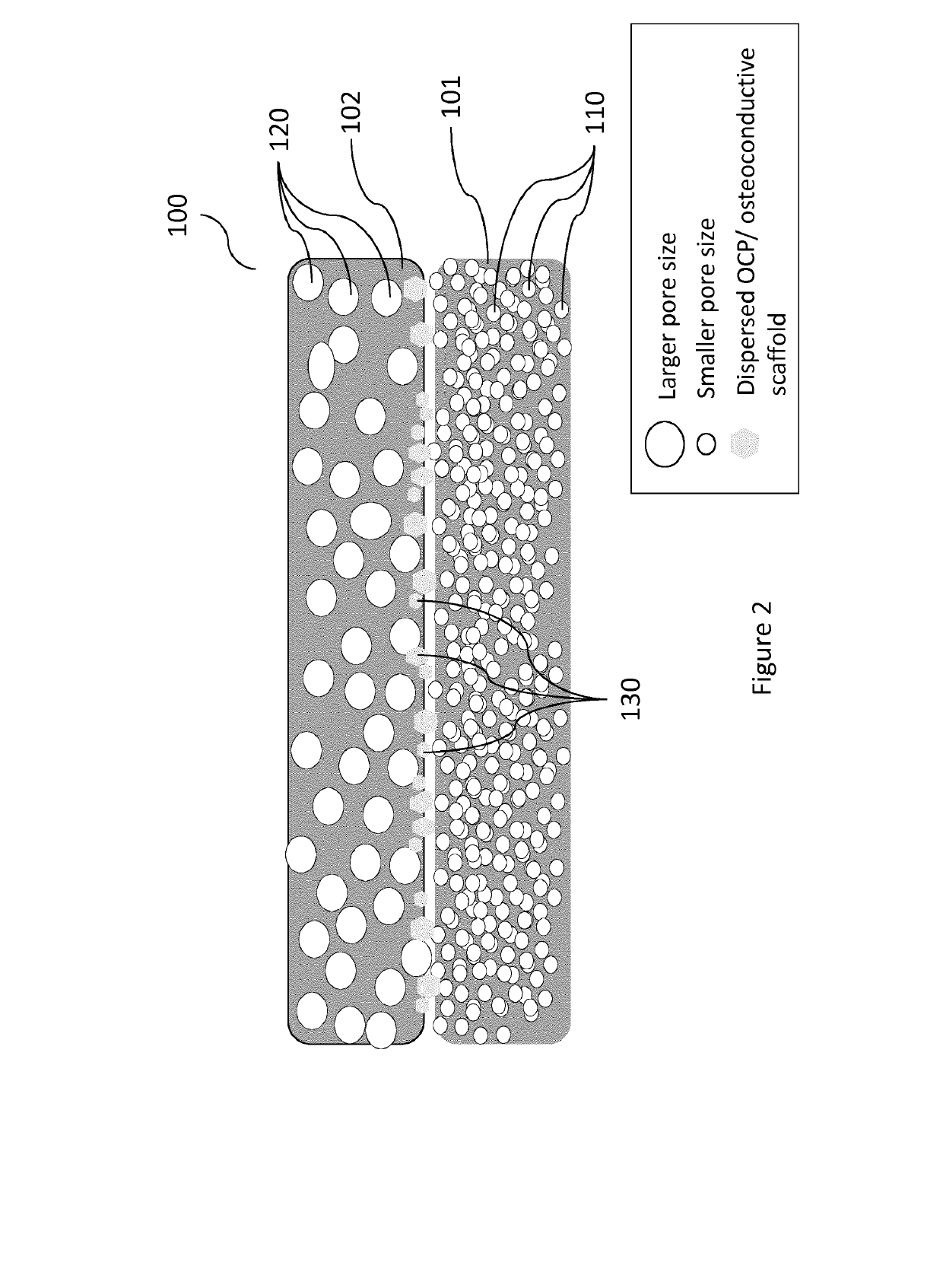Vascularity affinity precursor structure for musculo-skeletal tissue healing
a precursor structure and musculoskeletal tissue technology, applied in the field of medical devices, can solve the problems of bone tissue dying and ultimately collapsing, affecting other bony regions of the body, pain and arthritis, etc., and achieves the effects of promoting angio and osteogenesis, pliable, and maximum flexibility
- Summary
- Abstract
- Description
- Claims
- Application Information
AI Technical Summary
Benefits of technology
Problems solved by technology
Method used
Image
Examples
example 1
[0108]OCP is prepared following a modification of the publication LeGeros (Calcif Tissue Int. 1985 March; 37(2):194-7) in which calcium and phosphate solutions are first prepared and then mixed. Once the precipitate is fully formed, the OCP is filtered and heated to 50° C. to evaporate any remaining liquids. Once dried, the OCP precipitate is passed through standard testing sieves. The granules are separated into 3 groups, including granules with diameters ranging from 53 to 300 μm, 300 to 500 μm and 500 to 1000 μm. These are sterilised by heating at 120° C. for 2 hours. Previous research has shown that this treatment of heating to 120° C. for 2 hours does not affect the physical properties such as the crystalline structure or specific surface are of the OCP granules. It has also been reported that temperatures exceeding 100° C., over time, induce a gradual collapse of the OCP structure due to dehydration.
[0109]The collagen can be cast using either freeze dry or electrospinning tech...
example 2
[0122]Again, OCP will be prepared following a modification of the publication LeGeros (Calcif Tissue Int. 1985 March; 37(2):194-7) in which calcium and phosphate solutions are first prepared and then mixed. Once the precipitate is formed, the OCP is filtered and heated to 50° C. to evaporate any remaining liquids. Once dried, the OCP precipitate is passed through standard testing sieves. Granules are separated into 3 groups, granules with diameters ranging from 53 to 300 μm, 300 to 500 μm and 500 to 1000 μm. These will be sterilised by heating at 120° C. for 2 hours. Previous research has shown that this treatment of heating to 120° C. for 2 hours does not affect the physical properties such as the crystalline structure or specific surface are of the OCP granules. It has also been reported that temperatures exceeding 100° C., over time induce a gradual collapse of the OCP structure due to dehydration.
[0123]In this embodiment of the Invention, Spinplant in Germany which can produce c...
PUM
| Property | Measurement | Unit |
|---|---|---|
| diameter | aaaaa | aaaaa |
| size | aaaaa | aaaaa |
| size | aaaaa | aaaaa |
Abstract
Description
Claims
Application Information
 Login to View More
Login to View More - R&D
- Intellectual Property
- Life Sciences
- Materials
- Tech Scout
- Unparalleled Data Quality
- Higher Quality Content
- 60% Fewer Hallucinations
Browse by: Latest US Patents, China's latest patents, Technical Efficacy Thesaurus, Application Domain, Technology Topic, Popular Technical Reports.
© 2025 PatSnap. All rights reserved.Legal|Privacy policy|Modern Slavery Act Transparency Statement|Sitemap|About US| Contact US: help@patsnap.com



